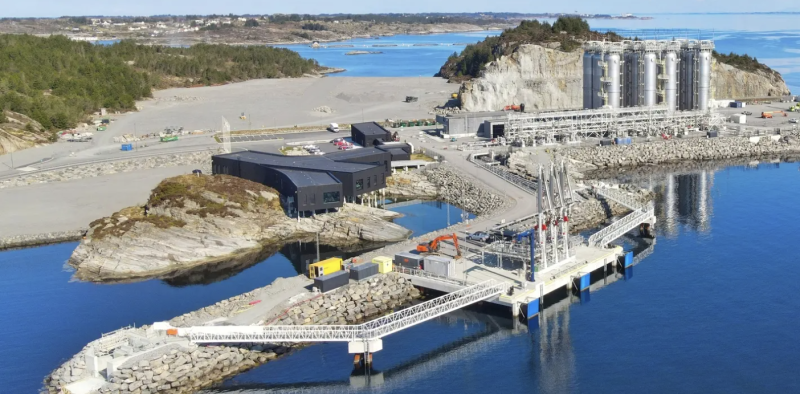The Northern Lights carbon capture and storage (CCS) facility near Bergen, Norway, is ready to store first CO2 with operations expected to begin early next year.
Project operator Equinor said in a 26 September press release that the first-phase capacity of 1.5 million tons (Mt) of CO2 per year is fully booked. Equinor said it is working with its joint-venture partners Shell and TotalEnergies to increase the transport and storage capacity for the future.
TotalEnergies said in a press release that the injection of the first CO2 cargo is expected in 2025 and that studies are underway to expand capacity to over 5 Mt CO2 per year in a second phase.
The $710-million (NOK 7.5 billion) Northern Lights project is part of the larger Norwegian full-scale CCS project named Longship. The full-scale project includes capturing CO2 from industrial sources and shipping liquid CO2 to the terminal in Øygarden, near Bergen, Norway. From there, the liquified CO2 will flow through a pipeline to the offshore storage location near the Troll field in the North Sea.

Equinor CEO Anders Opedal said in a press release that the completion of the facility is a significant milestone in the global development of a business model for carbon projects.
“It opens a value chain for decarbonization of European industry and energy,” he said.
As the industry strives to decarbonize, however, one of the stumbling points has been over commerciality of such projects. Even so, demand for storage projects is expected to exceed availability.
Long Journey
The Norwegian government initiated the Longship project to demonstrate the potential of CO2 capture, transport, and storage at scale, and as such it funded 80% of the $710-million Northern Lights scope, which focuses specifically on the transport and storage elements rather than the ships and CO2 capture plants.
CO2 captured and liquefied at a customer’s site will be transported by ship to the onshore receiving terminal at Øygarden. From there, a 100-km subsea pipeline will carry the CO2 to a subsea injection site for storage 2600 m below the North Sea mudline.
“This project demonstrates what can be achieved when authorities and industry are working towards the same goal and co-invest to reduce risks,” Opedal said. “The established Northern Lights value chain and experience from the project will be valuable in maturing and scaling up future CCS projects.”

In 2017, Equinor precursor Statoil awarded a front end engineering and design study to KBR for the Northern Lights project.
Exploitation license EL001 was awarded in January 2019, and the Eos injection and storage well was drilled in March 2020.
In May 2020, Equinor reached final investment decision on the Northern Lights project, and in December 2020, the Norwegian government approved funding the project. In March 2021, Equinor, Shell, and TotalEnergies launched Northern Lights as a company to offer carbon storage as a service.
Arnaud Le Foll, senior vice president for new business—carbon neutrality, at TotalEnergies, said in a press release, “It has been a long journey since our partnership with the Norwegian State, Equinor, and Shell was established in 2017. This major milestone signals the readiness of the infrastructure to store CO2, and we look forward to receiving the first volumes from hard-to-abate emitters in 2025.”


